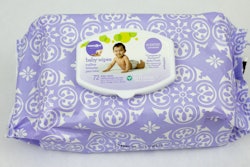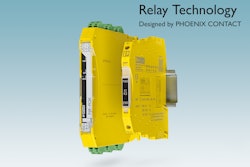“The silent salesman,” is the figurative moniker referring to the in-store role of packaging; however, getting the packaged product on store shelves is the role of a literal salesperson, who has to get the retailer’s buyer to say, “Yes.” It’s important to remember that a packaged product consists both package and product, and the two are often inseparably interdependent; therefore, salespeople, in order to maximize their chances for success, need to be knowledgeable about both.
Much has been written and lectured about how packaging is interdisciplinary, how it influences and is influenced by other disciplines, along with the resulting trade-offs. An example is the interface between packaging and logistics. Another is the interface between packaging and line operations. Arguably the most discussed example is the interface between packaging and marketing, typically focusing on the aforementioned silent salesman role. And despite the fact that sales is a part of marketing, the former doesn’t always avail itself of packaging’s prowess. Such should not be, especially for any CPG company subscribing to the adage, “Nothing happens until somebody sells something.”
Boarding the train
Packaging should be part of sales training, starting with new recruits and afterward on a continuing education basis. But what knowledge should be imparted? Ideally, the company already will regard packaging as a strategic tool and a source of competitive advantage, in which case the indoctrination of the salesforce reduces to detailing the company’s approach to leveraging said tool and source. The training should be conveyed within an industry framework, but specific as to product category, since most salespeople and buyers are specialized in that regard.
In times past, a large part of sales training consisted of the memorizing of a manual, but modern methods are more diversified, with printed materials being supplemented with videos, digital, and in-person presentations. The last mentioned, especially, represents opportunities for packaging professionals. So a Vice-President of Sales, for example, planning the annual meeting of the salesforce, would be wise to include one or more packaging-related presentations, whether delivered by professionals from in-house or from outside.
Avoiding buyer’s remorse
A buyer will regret having granted an appointment to a salesperson who brings nothing but a canned pitch, which, for example, doesn’t distinguish between product features and benefits for the retailer. Product proliferation is the hallmark of retailing, and even stores of moderate size carry tens of thousands of different items. Even when specializing in one product category, a buyer nonetheless is constantly beset with a multitude of decisions. A buyer is evaluated on the degree to which made decisions contribute to store profits; therefore, that buyer values salespersons who facilitate effective decision-making.
At any trade show dedicated to a category of CPGs, if someone randomly throws a stone, the chances will be good that it will hit a buyer. Often, the personnel manning the booths are local hires, only capable of providing buyers with samples, literature, and basic information. In contrast, a buyer expects more from an office visit granted to a salaried salesperson.
Take for example, a salesperson pitching a product line extension, a low-risk launch for the CPG, from the perspective that the other line varieties are already in-store. The buyer, however, likely has a different perspective, concerned about whether additional shelf-facings will generate additional sales for the entire line or whether the new extension merely will cannibalize sales. Yes, many salespeople would anticipate such concerns and arrive with consumer research data meant to persuade. Fewer might come prepared to incorporate packaging into the discussion, for example, citing that the graphics have been revised to make it easier for consumers to quickly distinguish and choose among the varieties.
On the risk scale, nothing registers higher for buyers than the launch of a new category or even a new launch within an existing category. The reason is that most new launches fail; nonetheless, a buyer can’t completely be risk-averse, realizing that new offerings help attract consumers. Buyers can hedge their bets with slotting fees; however, that’s pay-to-play that many moderate-sized companies can’t afford. Regardless of the size of a salesperson’s company, the chances of selling a new launch to a buyer (and, perhaps avoiding slotting fees) are enhanced by the demonstration that the “newness” is relevant to, and valued by, consumers. A salesperson who has top-of-mind awareness that packaging contributes to such newness is in a stronger position.
Ready or not
Claiming Retail-Ready Packaging (RRP), at most, gains a salesperson consideration. Retailers wield disproportionate sway in supply chains. As a result, RRP has become necessary, but not sufficient, as a deal-sealer. The typical salesperson will talk of how the packaging reduces in-store labor costs while increasing labor efficiencies. That same salesperson might add that those benefits translate into fewer stock-outs, and, therefore, increased sales and profits. That’s all to the good, made better if the benefits accrue not just in-store but throughout the retailer’s supply-chain, for example, the retailer’s distribution center.
A salesperson should realize that RRP is most cost-effective for products that have high turnover and that have large case pack numbers, and devote efforts in that regard. And when faced with retailer-issued guidelines, a salesperson should regard them as minimum requirements and have the mindset of exceeding them, or at least meeting them better than does the competition.
Bringing it home
In addition to performing all the activities most commonly associated with sales, a salesperson should serve as a conduit, relaying pertinent information to invested coworkers. Salespersons, for the most part, perform in an environment external to the company; as such, the salesforce is a font of information not otherwise easily obtained by others within the company. And if packaging professionals provide information useful to the salesforce, there should be quid pro quo. Advice, then, to packaging professionals: do all you can in support of sales coworkers, after which, may the salesforce be with you.


























